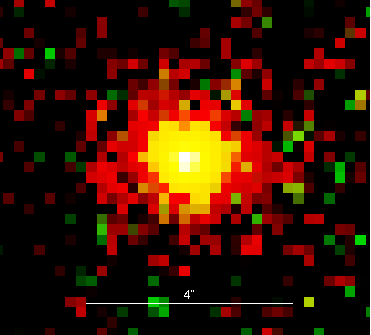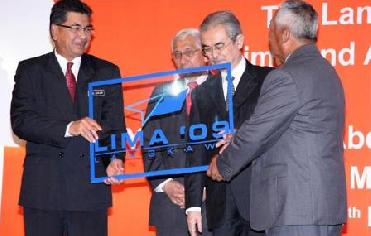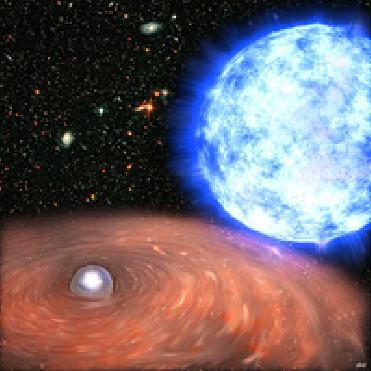
A false-color image of the most supermassive black hole. In addition to the bright central black hole (white), the image shows the surrounding host galaxy (red). Image Credit: Tomotsugu GOTO, University of Hawaii
LONDONO (BNS): A group of astronomers in the Hawaii University has discovered a giant galaxy surrounding the most distant supermassive black hole ever found.
The galaxy, so distant that it is seen as it was 12.8 billion years ago, is as large as the Milky Way galaxy and harbours a supermassive black hole that contains at least a billion times as much matter as our Sun.
The scientists, led by astronomer Tomotsugu Goto, publish their results in a paper in the journal Monthly Notices of the Royal Astronomical Society later this month.
�It is surprising that such a giant galaxy existed when the Universe was only one-sixteenth of its present age, and that it hosted a black hole one billion times more massive than the Sun. The galaxy and black hole must have formed very rapidly in the early Universe,� says Dr. Goto.
Knowledge of host galaxies of supermassive black holes is important to understand the long-standing mystery of how galaxies and black holes have evolved together. Until now, studying host galaxies in distant Universe has been extremely difficult as the blinding bright light from the vicinity of the black hole makes it more difficult to see the faint light emanating from the host galaxy.
Unlike smaller black holes, which form when a large star dies, the origin of supermassive black holes is yet to be solved. A currently favoured model requires several intermediate black holes to merge. After forming, supermassive black holes often continue to grow because their gravity draws in matter from surrounding objects. The energy released in this process accounts for the bright light emitted from the region around the black holes.
The latest discovery of the giant galaxy provides a reservoir of such intermediate black holes.
To see the supermassive black hole, the team of scientists used new red-sensitive Charge Coupled Devices (CCDs) installed in the Suprime-Cam camera on the Subaru telescope on Mauna Kea.
�The improved sensitivity of the new CCDs has brought an exciting discovery as its very first result,� Professor Satoshi Miyazaki of the National Astronomical Observatory of Japan (NAOJ), a collaborator in the project, said.
A careful analysis of the data revealed that 40 percent of the near-infrared light observed (at the wavelength of 9100 Angstroms) is from the host galaxy itself and 60 percent is from the surrounding clouds of material (nebulae) illuminated by the black hole.
Yousuke Utsumi, a member of the project team, said, �We have witnessed a supermassive black hole and its host galaxy forming together. This discovery has opened a new window for investigating galaxy-black hole co-evolution at the dawn of the Universe.�
 Previous Article
Previous Article Next Article
Next Article













The Indian Air Force, in its flight trials evaluation report submitted before the Defence Ministry l..
view articleAn insight into the Medium Multi-Role Combat Aircraft competition...
view articleSky enthusiasts can now spot the International Space Station (ISS) commanded by Indian-American astr..
view article